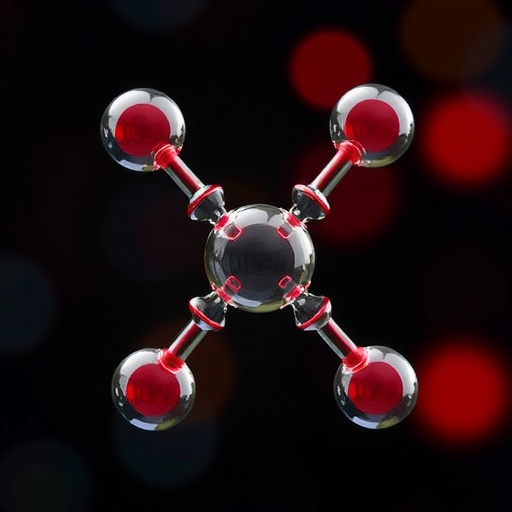In the realm of synthetic chemistry, the exploration of boron-containing cyclic compounds has gained significant momentum due to their compelling functional properties and applications across pharmaceuticals and materials science. Boracycles, cyclic molecules incorporating boron atoms within their ring structures, have emerged as critical scaffolds that often exhibit performance surpassing their all-carbon counterparts. Despite the intense research interest, the synthesis and stabilization of certain boracycles, especially those featuring four-membered rings, have proven to be particularly challenging, largely due to their inherent ring strain and thermodynamic instability. A groundbreaking study published in Nature Chemistry now unveils a novel approach harnessing boron–carbon-centred diradicals and triplet energy transfer catalysis to overcome these obstacles, opening new horizons in the synthesis of air-stable, strained boracycles with promising functional properties.
Boracycles are known for their diverse roles in various chemical applications, and their unique bonding situations often facilitate reactivity and properties unattainable by traditional organic analogues. Specifically, five-membered oxaboracycles are well-recognized pharmacophores in several FDA-approved boron-containing drugs, playing pivotal roles in medicinal chemistry. Meanwhile, six-membered boron-doped polycyclic aromatic hydrocarbons have recently contributed extensively to the diversification and fine-tuning of optoelectronic materials, particularly in the development of organic semiconductors and light-emitting devices. However, the synthetic landscape of four-membered boron-containing rings remains underexplored, posing a significant bottleneck due to the considerable ring strain that not only renders these molecules thermodynamically unstable but also complicates their isolation and subsequent functionalization.
The study led by Wang, Zhang, Yang, and colleagues addresses this long-standing challenge by introducing a metal-free, neutral reaction protocol that employs triplet energy transfer catalysis. This innovative strategy capitalizes on the generation of boron–carbon-centred diradicals that undergo intramolecular coupling to yield air-stable benzoboretenes, a class of four-membered boracyclic compounds. The triplet energy transfer process provides suitable activation energy to facilitate bond formation within these strained frameworks without necessitating harsh conditions or metal catalysts, thereby expanding the scope of accessible boracyclic architectures.
This approach stands out not only for its elegance but also for its practical implications. The neutral, metal-free nature of the reaction ensures compatibility with a broad array of functional groups and substrates, significantly enhancing synthetic versatility. Furthermore, the resulting benzoboretenes exhibit notable stability, enough to withstand purification by standard column chromatography, a feat seldom accomplished with four-membered boracycles due to their typical fragility. This advancement heralds a new chapter in boron heterocycle chemistry by enabling the detailed investigation of their properties and potential applications.
Crucially, the researchers demonstrate that by finely tuning the π-conjugation patterns and excitation energies within the substrates, the diradical intermediates can be directed towards alternative cyclization pathways. For instance, formal 1,6-cyclization gives rise to dihydroborinine structures, whereas 1,5-cyclization results in dihydrocyclopropaborole derivatives. These transformations exemplify the modularity of the methodology, showcasing the ability to selectively harness multiple ring sizes and frameworks from similar diradical precursors. This tunable reactivity provides a versatile synthetic toolbox for chemists seeking to craft a variety of boron-enriched cyclic architectures.
The detailed mechanistic insights offered by the study suggest that the boron–carbon-centred diradicals play a pivotal role not only as reactive intermediates but also as entities that can mediate complex intramolecular coupling steps under mild conditions. The authors posit that the transient diradicals formed upon excitation undergo selective radical recombination processes, overcoming the thermodynamic penalties associated with ring strain. This underlines an essential principle in modern radical chemistry: that careful control of electronic excitation states can guide the formation of otherwise inaccessible molecular frameworks.
Beyond the initial formation of benzoboretenes and related boracycles, the study further explores avenues for post-synthetic modifications. These include the facile synthesis of oxaborabicycles and dihydroborinine-fused polycyclic aromatic hydrocarbons. Such modifications are not merely structural elaborations; they impart the resultant molecules with unique optoelectronic properties, potentially influencing future applications in organic electronics, sensing, and catalysis. The ability to systematically introduce boron into polycyclic scaffolds, with concurrent modulation of their electronics, positions these findings at the forefront of advanced molecular design.
Equally impactful is the study’s contribution to the broader understanding of boron-centered radical chemistry. Radicals centered on boron atoms have, until now, remained relatively elusive and difficult to harness. By successfully generating and utilizing boron–carbon diradicals within a catalytic cycle, the authors provide a framework for future endeavors seeking to exploit such species in the assembly of complex structures. This opens a fertile ground for subsequent research into radical-mediated boron chemistry, potentially influencing synthetic strategies across multiple disciplines.
The implications of this work resonate beyond mere synthetic achievements. The unique optoelectronic properties observed in the modified boracycles hint at applications ranging from organic photovoltaics to molecular sensors and beyond. Boron doping of polycyclic aromatic hydrocarbons alters their electronic distributions, charge transport characteristics, and photophysical behaviors, and the ability to access new boron-doped scaffolds may accelerate the discovery of next-generation organic materials.
Moreover, the simplicity and efficiency of the metal-free triplet energy transfer catalysis described herald a paradigm shift in sustainable chemistry. Avoiding precious or toxic metal catalysts reduces environmental impact and cost, aligning the methodology with principles of green chemistry. This could facilitate large-scale applications and invites reconsideration of existing synthetic routes to boron heterocycles on industrial scales.
The authors’ meticulous substrate scope analysis confirms the broad applicability of their approach. By varying substituents and conjugation patterns, they demonstrate a general strategy adaptable to diverse molecular precursors. This adaptability is crucial for the translation of such chemistries into practical synthesis schemes and perhaps fine-tuning material properties for specific uses.
Looking forward, this study lays the groundwork for expansive exploration of boron heterocycles with varying ring sizes, substituents, and fused ring systems. The methodologies and mechanistic principles elucidated here will undoubtedly inspire further innovations not only in the synthesis of new boron-containing compounds but also in understanding their behavior in biological and materials contexts.
In sum, the fusion of boron-centered diradical chemistry with triplet energy transfer catalysis manifests a powerful synthetic tool that surmounts longstanding challenges in constructing strained, air-stable boracycles. This breakthrough is poised to invigorate multidisciplinary research intersecting synthetic chemistry, materials science, and pharmacology, by unlocking access to novel boron-based scaffolds endowed with distinctive properties.
Subject of Research: Synthesis and characterization of strained, air-stable boron-containing four-membered rings via boron–carbon-centred diradical intermediates, enabled by triplet energy transfer catalysis.
Article Title: Synthesis of strained, air-stable boracycles via boron–carbon-centred diradicals.
Article References:
Wang, X., Zhang, P., Yang, Z. et al. Synthesis of strained, air-stable boracycles via boron–carbon-centred diradicals. Nat. Chem. (2025). https://doi.org/10.1038/s41557-025-01807-x
Image Credits: AI Generated
Tags: air-stable boracyclesboron diradicals in chemistryboron-containing cyclic compoundschallenges in boron cycle synthesisfive-membered oxaboracycles in pharmaceuticalsmedicinal chemistry of boron compoundsoptoelectronic applications of boracyclesorganic semiconductor developmentsix-membered boron-doped materialsstabilization of strained boracyclessynthesis of boracyclestriplet energy transfer catalysis






